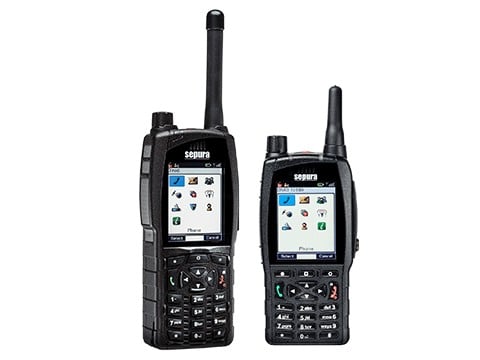Definition of Terrestrial Trunked Radio (Tetra) in the Network Encyclopedia.
What is Terrestrial Trunked Radio (Tetra)?
Terrestrial Trunked Radio, also known as TETRA, is an initiative from the European Telecommunications Standards Institute (ETSI) for a single standard for digital mobile radio services. Terrestrial Trunked Radio (Tetra) is defined in a memorandum of understanding between a number of different equipment vendors, service providers, testing bodies, and regulatory agencies that was laid out in 1994.

Tetra consists of two complementary standards:
- A standard Time Division Multiple Access (TDMA) cellular communication system for voice and data communication on 25-kHz channels
- A Packet Data Optimized (PDO) protocol for packet-switched data-only transmission at 36 Kbps on 25-kHz channels
Tetra includes support for security features such as multilevel authentication and encryption, allows voice and data communication to be combined using the same equipment, and supports multiplexing of up to four channels to provide data rates of up to 144 Kbps. Tetra is complementary to the Global System for Mobile Communications (GSM) cellular communication standard: GSM can be considered an extension of the Integrated Services Digital Network (ISDN) to the wireless domain, while Tetra is an extension of ISDN Private Branch Exchange (PBX) systems to the same domain. Tetra thus provides additional communication functionality not built into GSM, such as direct mobile-to-mobile communication that bypasses the communication infrastructure, support for broadcast and group call features, fast call setup, priority call, and so on.
Disadvantages of Terrestrial Trunked Radio
The main disadvantages of Tetra are:
- Requires a linear amplifier to meet the stringent RF specifications that allow it to exist alongside other radio services.
- Data transfer is slow by modern standards.
Up to 7.2 kbit/s per timeslot, in the case of point-to-point connections, and 3.5 kbit/s per timeslot in case of IP encapsulation. Both options permit the use of between one and four timeslots. Different implementations include one of the previous connectivity capabilities, both, or none, and one timeslot or more. These rates are ostensibly faster than the competing technologies DMR, dPMR, and P25 are capable of. The latest version of standard supports 115.2 kbit/s in 25 kHz or up to 691.2 kbit/s in an expanded 150 kHz channel. To overcome the limitations many software vendors have begun to consider hybrid solutions where TETRA is used for critical signaling while large data synchronization and transfer of images and video is done over 3G / LTE.
Digital Advanced Wireless System (DAWS)
Because of the recent growth of the Internet and wide demand for high-speed wireless mobile data services, a new high-speed wireless mobile packet-switching system called the Digital Advanced Wireless System (DAWS) is currently being developed by the ETSI to supersede the Tetra PDO standard.